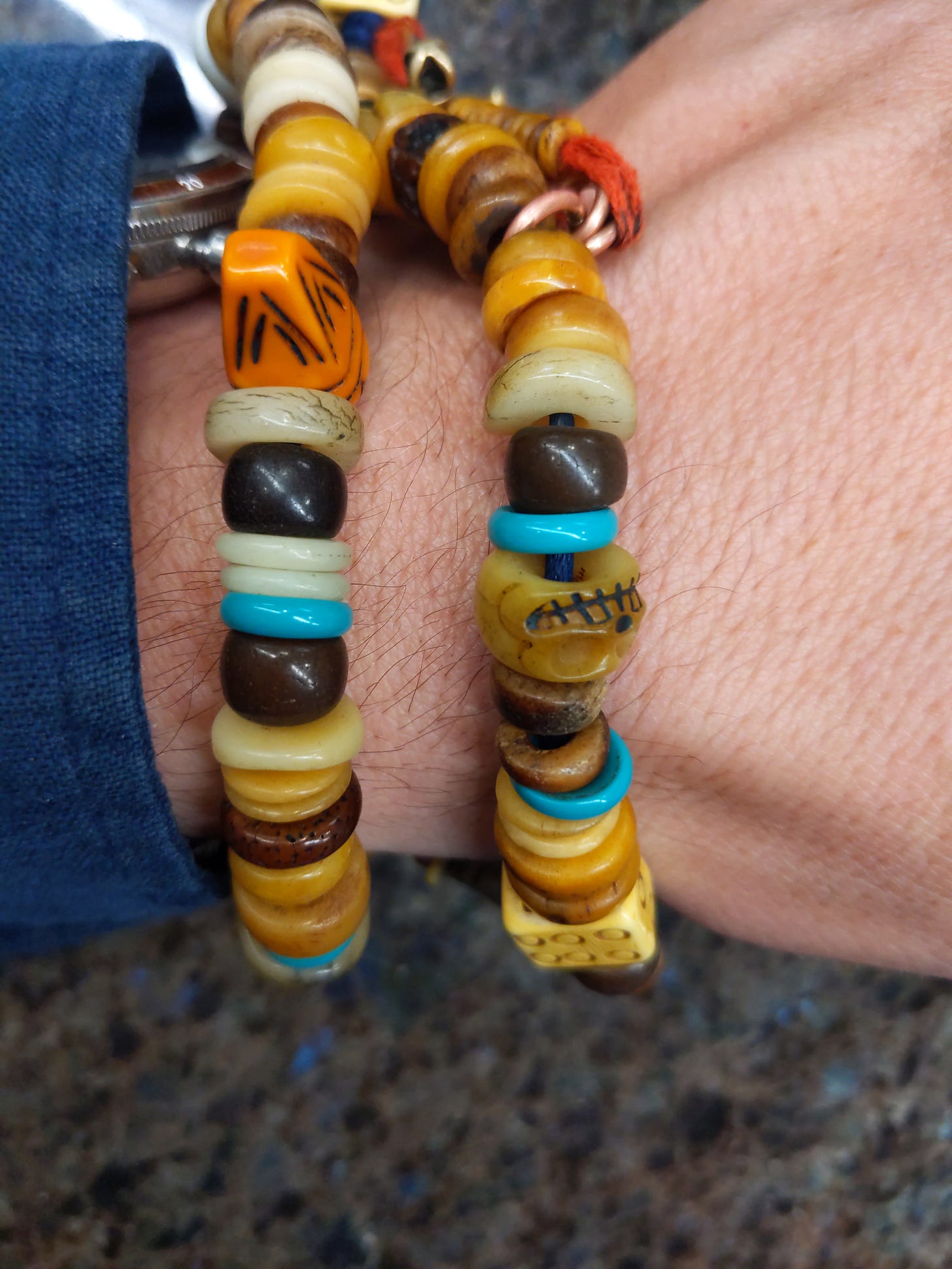“All that you touch
You Change.
All that you Change
Changes you.
The only lasting truth
is Change.
God
is Change.”
― Octavia E. Butler, The Parable of the Sower
Whether it’s a mala for meditation or a rosary, I have a special affinity for beads. But as with many things, I tend to notice flaws over time. Even in Raphael’s profound symbolic Sistine Madonna — after excessive contemplation of a four-foot replica in my bedroom — I find aesthetic blunders. It is, like anything we make, imperfect.
Eventually, I began to dislike the aquamarine beads in my Tibetan bracelet. They did not speak to me. While I enjoyed their colors, they felt somewhat out of place. When I visited New Mexico a number of years ago, I decided I would replace these particular beads with turquoise. In fact, I also replaced some of the copper rings with turquoise because it is a hydrous phosphate of copper and aluminum. The color of turquoise is related to the green patina that naturally forms on copper. So, I removed those bluish beads. This replacement process was uneventful, unlike adding the next type of bead.
In Tibet, there is a tradition where bones can be saved and used in rituals to expiate karma. In the materialistic West, we do a similar thing, but it appears as people donating their cadavers to science. By contrast, in Jewish tradition, exposed bones are considered a serious desecration. An example of what exposed bones mean can be seen in a story by Isaac Bashevis Singer,
“And now starts the story of how I [the Devil] and my minions forced the old sinner, Nathan Jozefover, to become a man who sees without being seen, so that his bones would never be properly buried, which is the penalty for lechery.”1
In Singer’s story, the forgotten man dies alone, without anyone to say kaddish for him, and his bones are not found. He becomes trapped as a haunt, ever seeing but never seen. Symbolically, lechery not only destroys families, it destroys one’s own connection to families, and one is blown about by the wind. As Dante writes about the second circle of hell,
“I understood that to this torment sad
The carnal sinners are condemn’d, in whom
Reason by lust is sway’d.”2
People deeply misunderstand Dante as seeing hell “elsewhere” — the astral world permeates this one. The entire story of the Inferno begins in media res, notably, at middle age for the author: “Dante became a seer at the age of thirty-five. It is the age when the physical forces cease to forestall the influx of Spirit; liberated from the body, these same forces can be transformed into clairvoyant faculties.”3 What we sometimes call a “mid-life crisis” has real spiritual significance. What Dante “saw” was the astral forms of those lost in their ways — the shapes of their imaginations, if you will.
Rudolf Steiner goes so far as to warn anyone against writing publicly on esoteric themes before the age of thirty-five. This is one warning I took seriously and bit my tongue. I’m glad I waited, or I’d have a mess of feverish writings I’d have to reject completely by now because my entire existence shares as little commonality with my tumultuous “Christ years” (thirty to thirty-three) save that that something else won out. Your own life begins at its midpoint. I’ve even come to the conclusion that however karma may work, your childhood must be reverse-engineered to produce you again, at the turning point of life, as you were when you left a previous life. You are born at the heart, not from your parents. Similarly, the generative center of the world is the cross, not Genesis. My past is necessary to produce me as me, but it is an echo of what no longer exists. When Christ says “It is finished” he means the work of creation.
Keep reading with a 7-day free trial
Subscribe to False Mirror to keep reading this post and get 7 days of free access to the full post archives.


